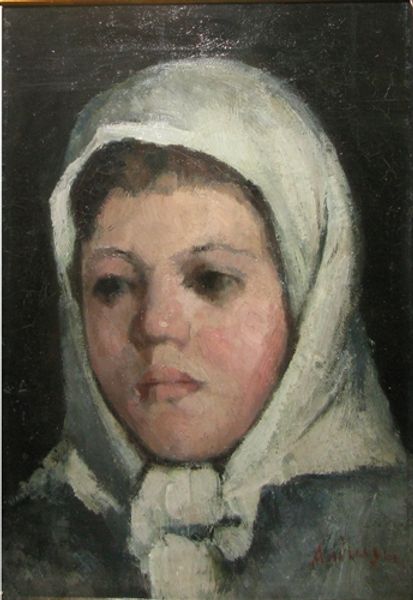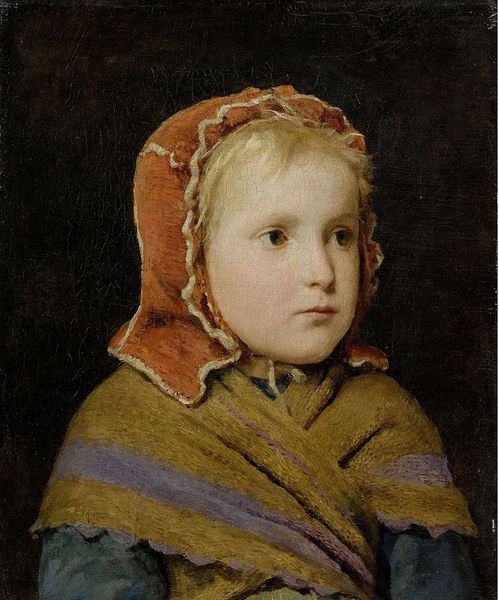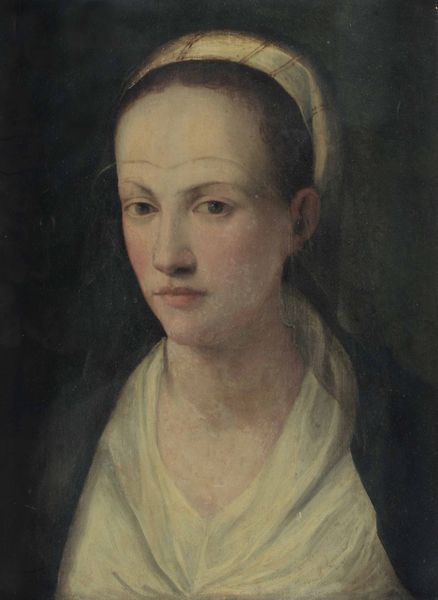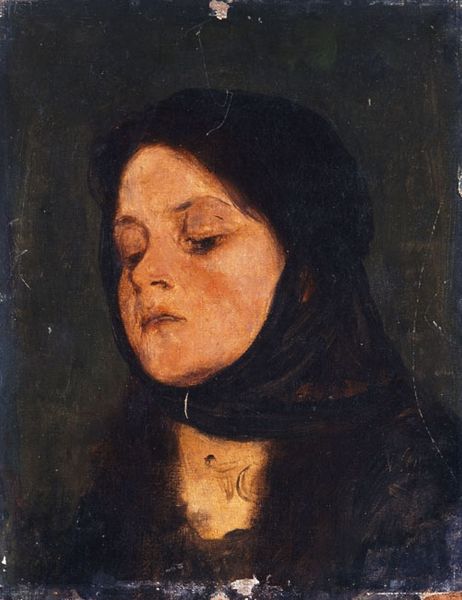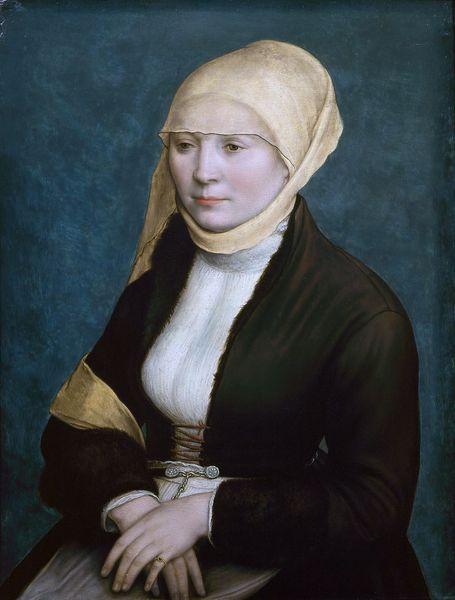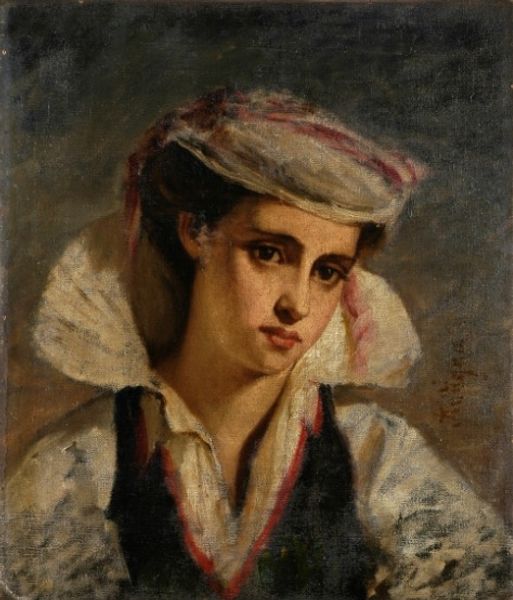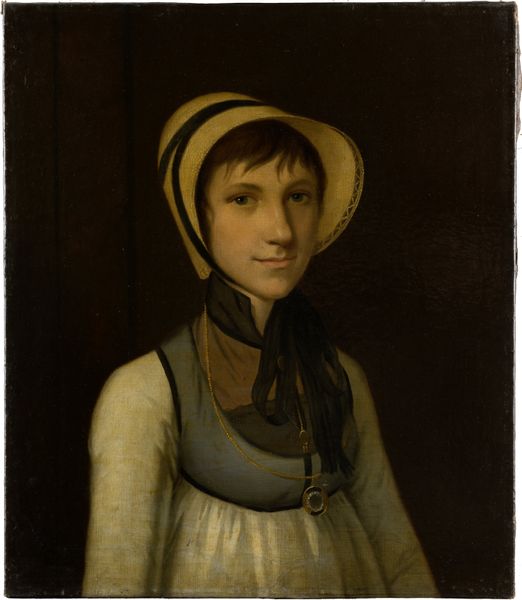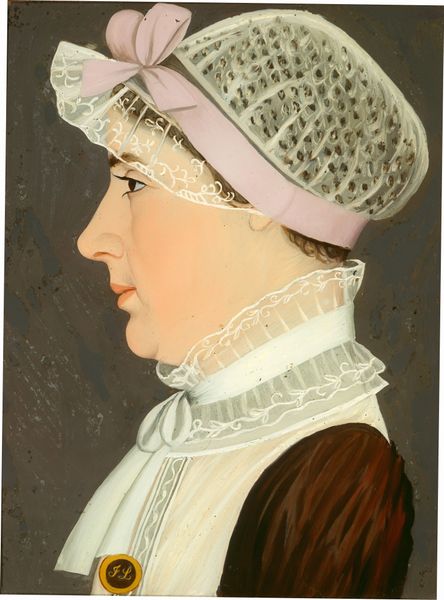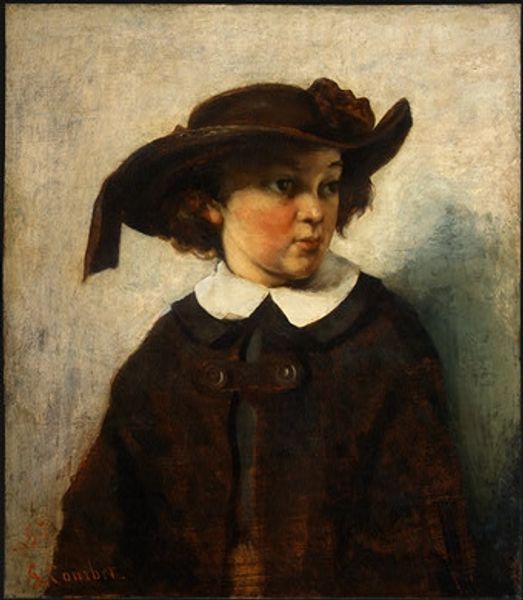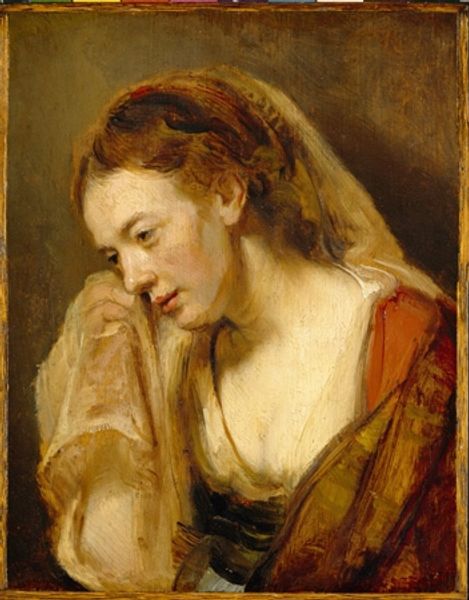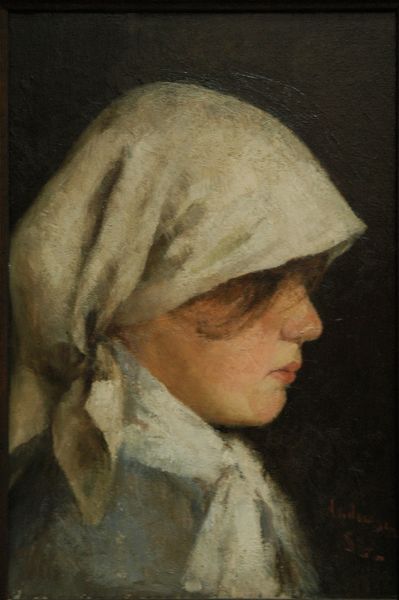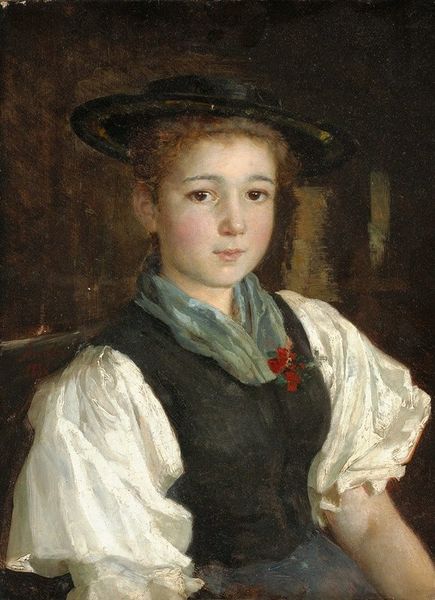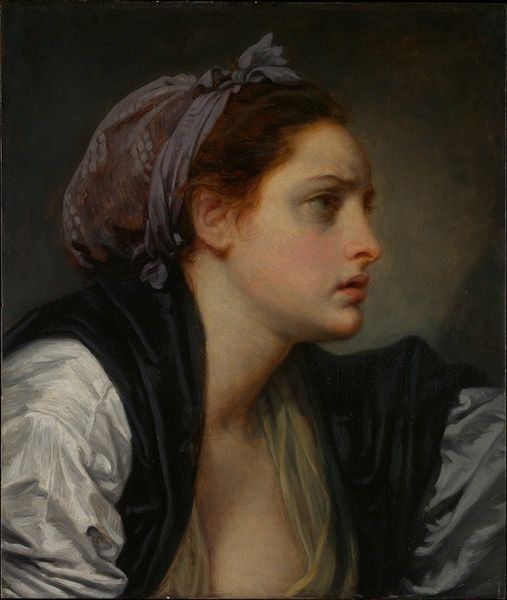
Copyright: Public Domain: Artvee
Editor: Here we have Gabriel von Max's "Studienkopf VI" from 1880. It’s an oil painting, quite small, and… I’m immediately struck by its stillness. What’s your take on this work? Curator: Notice first how the painting depicts the material circumstances of the subject through the careful representation of fabrics: the rough texture of the white headscarf and draped cloth contrasts with her soft skin, giving rise to different levels of refinement. And that interplay of rough and smooth is something von Max repeats again with the background wall or wood panels. Editor: I hadn’t thought about it that way. I saw it as an almost romantic depiction, but what you're saying changes how I view the social status of the woman. Curator: Consider, too, the implications of "Studienkopf"—study head. This wasn't presented as high art in the way history painting might have been. Instead, it suggests a process of careful labor on the artist's part, a practical approach. Do you think that impacts the work's reception and perceived value? Editor: Definitely! If it’s a “study,” that changes my perception, it’s almost like viewing an artist’s notes, and then seeing the materials used to compose these notes! I learn more by focusing on production of an artwork. Thanks for highlighting that, that changes everything. Curator: Indeed. Reflecting on the conditions of the painting’s creation opens avenues beyond just aesthetics. It also allows us to think about accessibility. How and why was the painting created and by whom?
Comments
No comments
Be the first to comment and join the conversation on the ultimate creative platform.
